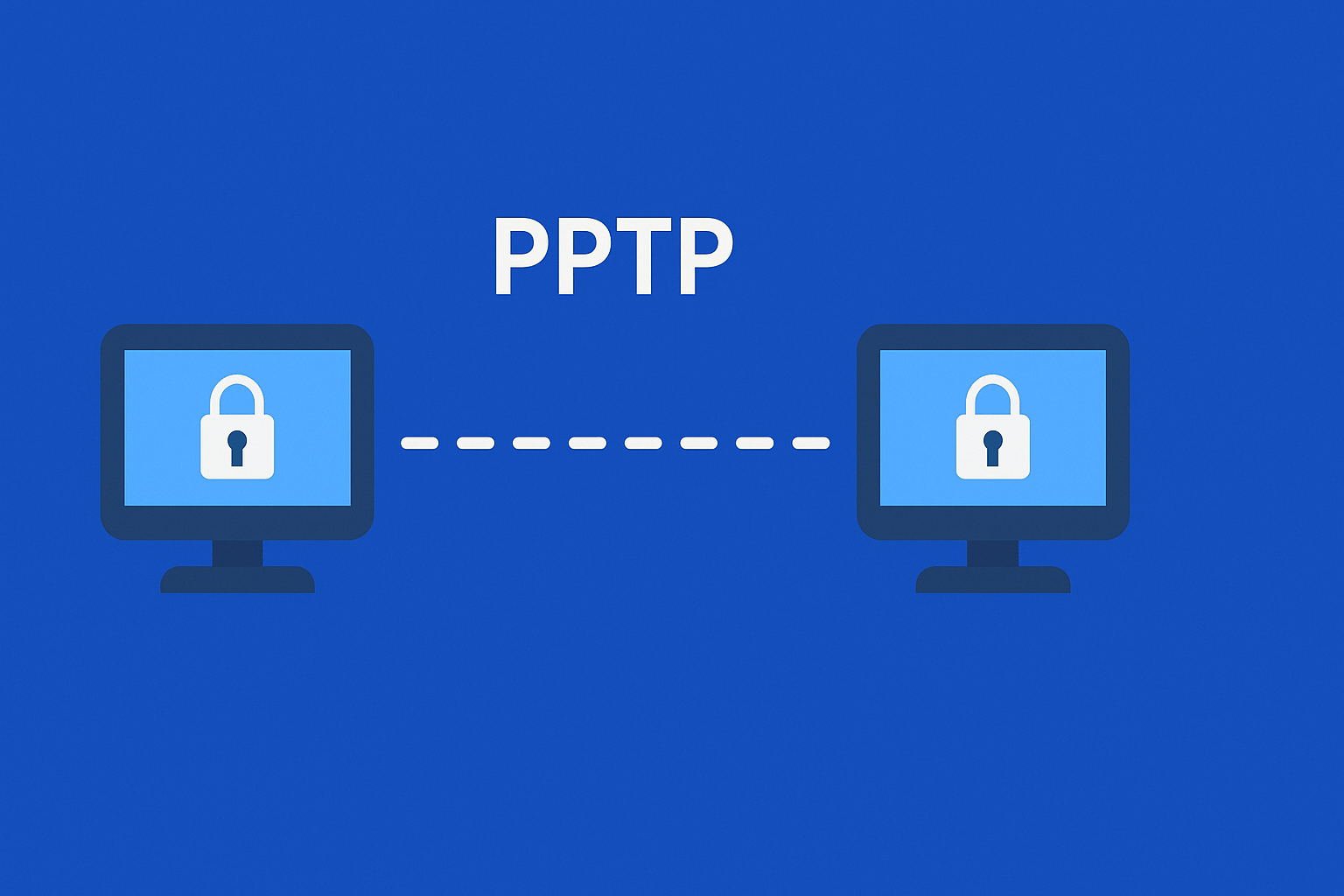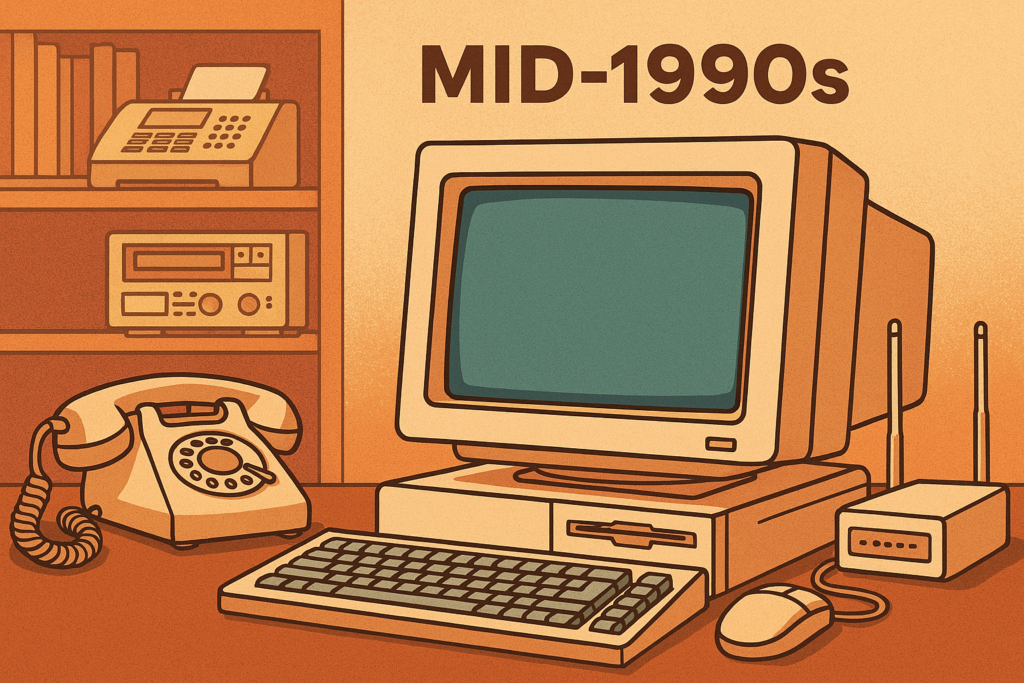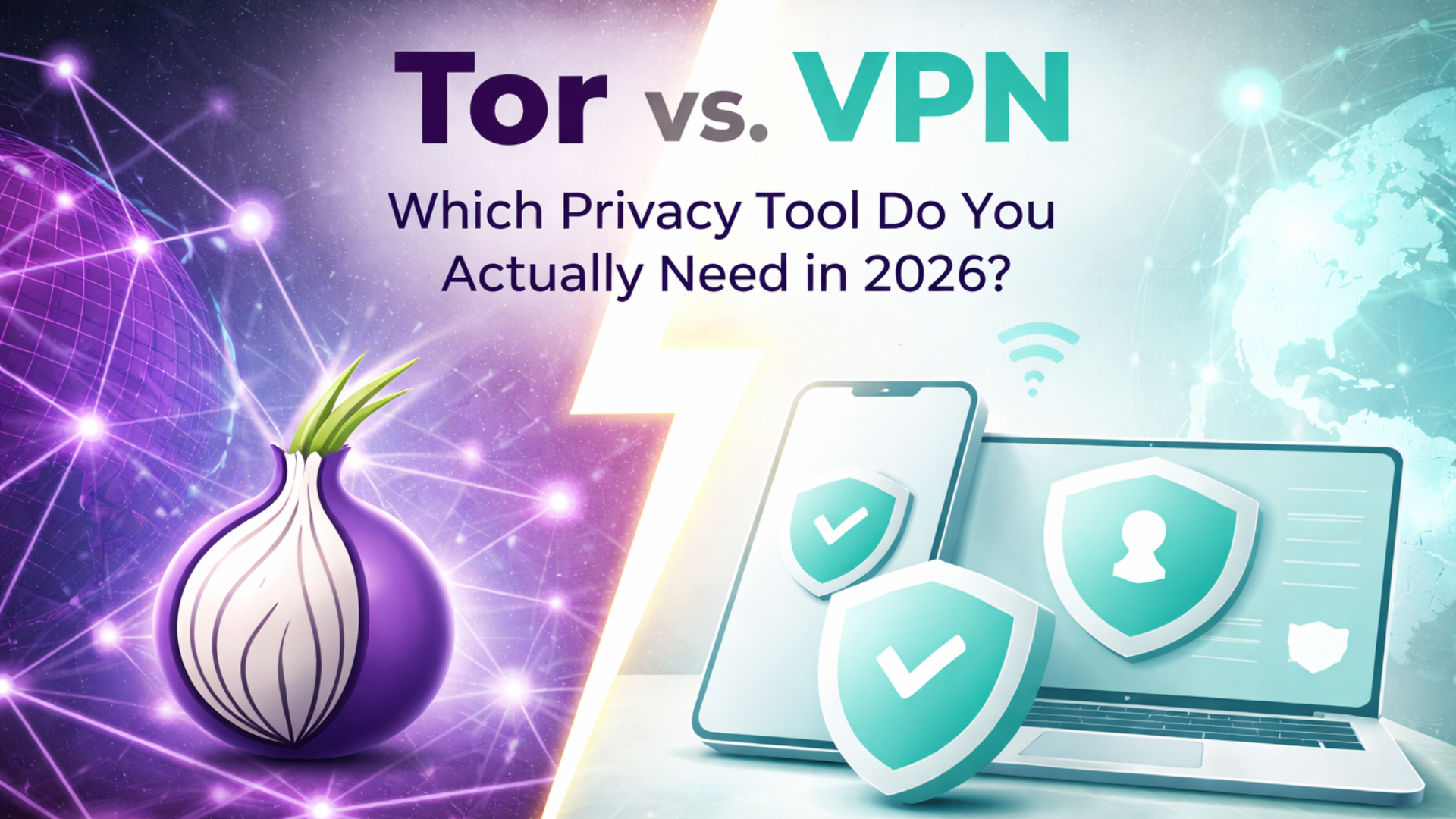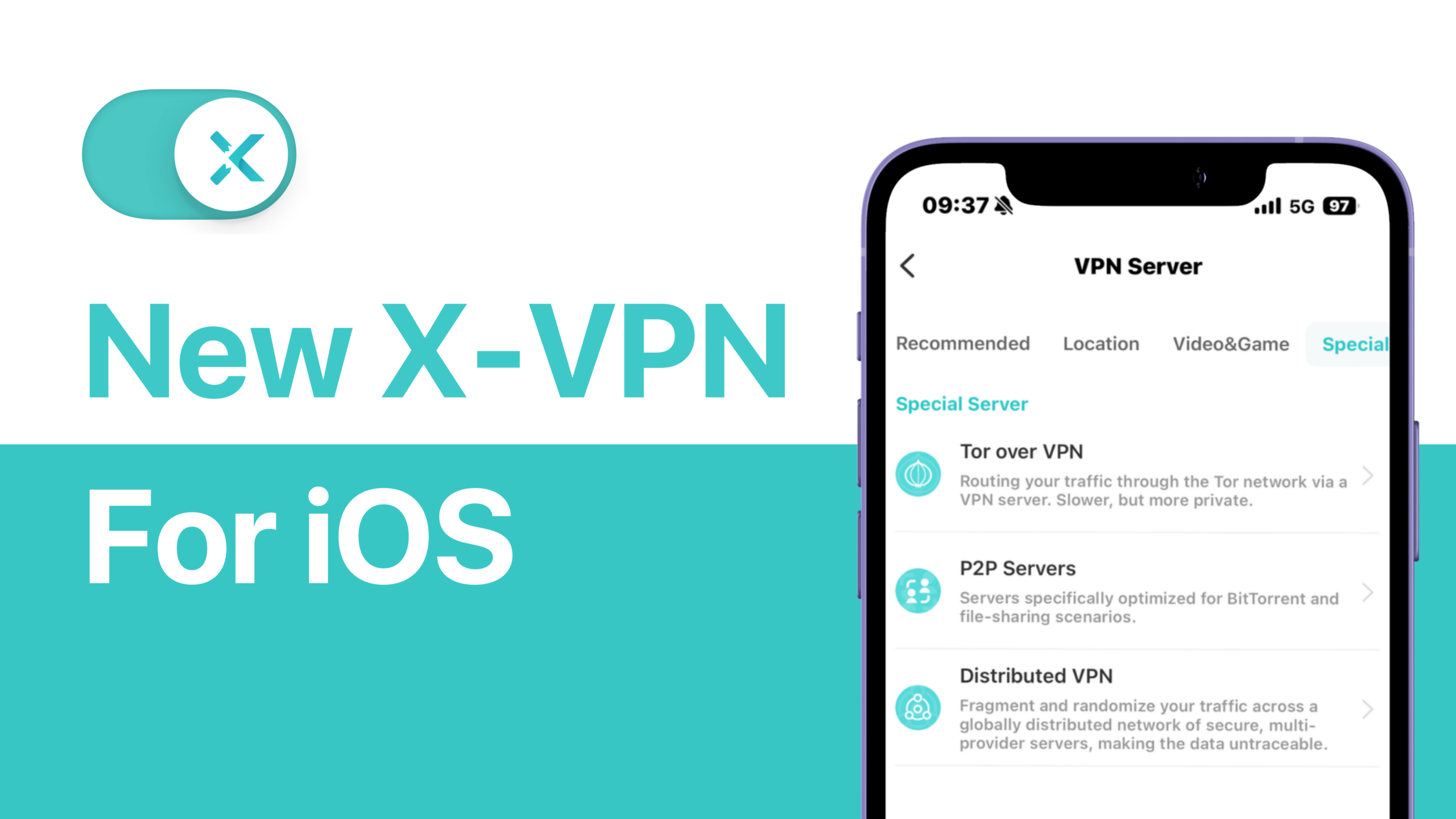
Quick Answer
PPTP — short for Point-to-Point Tunneling Protocol — is one of the oldest VPN protocols, created by Microsoft in the 1990s. It became popular because it was fast, easy to set up, and supported on almost every device. But today it’s considered obsolete and insecure. Its RC4 encryption and MS-CHAPv2 authentication can be cracked in hours, and most major operating systems no longer support it. Modern security experts recommend safer protocols such as OpenVPN or WireGuard.
If you’re new to VPNs, you can start here: How VPN tunnels work.
Table of Contents
From Innovation to Obsolescence
VPNs were invented to protect data on the public internet by creating encrypted tunnels. In the mid-1990s, Microsoft introduced PPTP as a simple way for businesses and home users to secure their connections.

For a while it was everywhere. Windows, macOS, and Linux all had built-in support, and many routers shipped with PPTP ready to go. Because the encryption was lightweight, it offered speedy connections and almost no setup headaches.
But the same simplicity also left PPTP fragile. Over the years, attackers found reliable ways to break its weak encryption and authentication. By the 2010s, both Apple and Microsoft had moved on to stronger protocols, and PPTP’s reputation had gone from pioneering to unsafe.
Bottom line: PPTP solved an early problem but hasn’t kept up with modern security standards.
How PPTP Works
Think of online traffic like mail. Without a VPN, it’s like sending postcards—anyone can read them. PPTP is like putting those postcards in a thin envelope. It hides the contents a little, but anyone determined enough can still look inside. Modern VPNs such as OpenVPN or WireGuard are more like locked boxes, secure against prying eyes.
Behind the scenes, PPTP wraps your data in a layer called GRE (Generic Routing Encapsulation) so it travels as if it’s on its own private lane. It then tries to protect that data with RC4 encryption through Microsoft Point-to-Point Encryption (MPPE). Finally, it verifies your credentials with MS-CHAPv2.
This design made sense in the 1990s when computers were slower and strong encryption was expensive. Now these methods are weak: RC4 can be broken quickly, and MS-CHAPv2 passwords can be cracked in hours.
Bottom line: PPTP creates a tunnel, but it’s too thin to withstand today’s attackers.
Why PPTP Was Popular
At its peak, PPTP stood out for three reasons: it was built into major operating systems, it connected quickly thanks to lightweight encryption, and it was supported almost everywhere. For the 1990s and early 2000s, that made it the go-to VPN protocol for businesses and individual users alike.
Bottom line: PPTP’s speed and simplicity made it attractive then, but those traits limit its safety now.
Why PPTP Is Insecure
Modern security research leaves no doubt about PPTP’s flaws:
- Broken encryption. RC4 has been proven vulnerable; with today’s computing power, encrypted traffic can be cracked.
- Weak authentication. In a 1998 UC Berkeley study, cryptographer Bruce Schneier and colleagues showed MS-CHAPv2 credentials could be brute-forced in hours.
- No integrity protection. PPTP cannot ensure data isn’t altered in transit, leaving it open to man-in-the-middle attacks.
- Dropped support. Apple removed PPTP starting with iOS 10 and macOS Sierra, and Microsoft now discourages its use in favor of stronger options like L2TP/IPsec or IKEv2.
- Real-world failures. The SANS Institute demonstrated PPTP exploits in 2002, and a 2019 IEEE study found PPTP collapsed under DDoS conditions with severe packet loss.
Bottom line: PPTP is fast but fundamentally insecure.
Can You Still Use PPTP?
Technically yes, but only in very limited situations: some legacy corporate networks still depend on it, and in fully isolated internal LANs it may be tolerated. For anything involving privacy, banking, or day-to-day internet use, PPTP is not safe.

Bottom line: PPTP offers only the illusion of protection. Use modern protocols instead.
VPN Protocol Comparison: Safer Alternatives
| Protocol | Security | Speed | Stability | Compatibility | Best Use Case |
|---|---|---|---|---|---|
| PPTP | ❌ Very poor | ✅ Fast | Average | Legacy devices | Obsolete only |
| L2TP/IPsec | ✅ Moderate | Average | Stable | Widely supported | Basic VPN needs |
| OpenVPN | ✅✅ High | Average | Stable | Broad support | Secure browsing |
| WireGuard | ✅✅ High | ✅✅ Very fast | Stable | Growing | Best mix of speed + security |
For most users, OpenVPN or WireGuard is the safest choice. Mobile users often prefer IKEv2/IPsec.
Bottom line: Modern VPN protocols give you speed and real security—PPTP does not.
Expert Consensus
Security researchers have studied PPTP for decades and reached the same conclusion:
- UC Berkeley (1998): MS-CHAPv2 passwords can be cracked within hours.
- SANS Institute (2002): PPTP can be exploited with brute-force and DoS attacks.
- IEEE SoutheastCon (2019): PPTP fails under DDoS stress, with unstable connections and high packet loss.
- Springer (2016): Cross-protocol attacks combining PPTP with RADIUS can leak session keys.
Bottom line: PPTP isn’t just outdated—it’s fundamentally insecure.
Conclusion: PPTP’s Role in History Has Ended
PPTP was a milestone in VPN history, making secure connections possible for the first time on a wide scale. But today it’s a relic.
- Individuals: Don’t use PPTP for online privacy.
- Businesses: Restrict PPTP to legacy internal systems and plan migration.
- Modern users: Protocols like OpenVPN, IKEv2/IPsec, and especially WireGuard are the secure alternatives worth trusting.
Ready to move on from obsolete protocols? Download the latest VPN client and protect your privacy with modern encryption.
VPNs are built on trust. PPTP once earned it, but today, it no longer deserves it.
Is PPTP still safe to use in 2025?
No. PPTP’s RC4 encryption and MS-CHAPv2 authentication can be cracked in hours with modern tools. It lacks data integrity protection and has been dropped by Apple, Microsoft, and most VPN providers. It may still function for legacy internal systems, but it should not be used for everyday internet security.
Why did Apple and Microsoft remove PPTP support?
Both companies phased out PPTP because of long-standing security vulnerabilities. Apple removed PPTP starting with iOS 10 and macOS Sierra, while Microsoft discourages its use in favor of L2TP/IPsec, IKEv2/IPsec, OpenVPN, and WireGuard. This shift reflects an industry-wide move to stronger encryption.
What’s the difference between PPTP and L2TP/IPsec?
L2TP/IPsec combines a tunneling protocol (L2TP) with IPsec encryption. It’s slower to connect than PPTP but far more secure. PPTP only uses weak RC4-based encryption and outdated authentication, making it easy to break. If you’re choosing between the two, L2TP/IPsec is the safer option.
Which VPN protocol should I use instead of PPTP?
For most users, OpenVPN or WireGuard are the best choices. Both use strong, modern encryption, are actively maintained, and perform well on mobile and desktop. IKEv2/IPsec is also a solid option for mobile devices because it reconnects quickly when switching networks.
Can PPTP be used without encryption?
Technically, PPTP can be configured without encryption (known as “PPTP with MPPE disabled”), but doing so exposes all your data. This setup defeats the purpose of a VPN and is not recommended except in very specific, non-sensitive lab environments.



